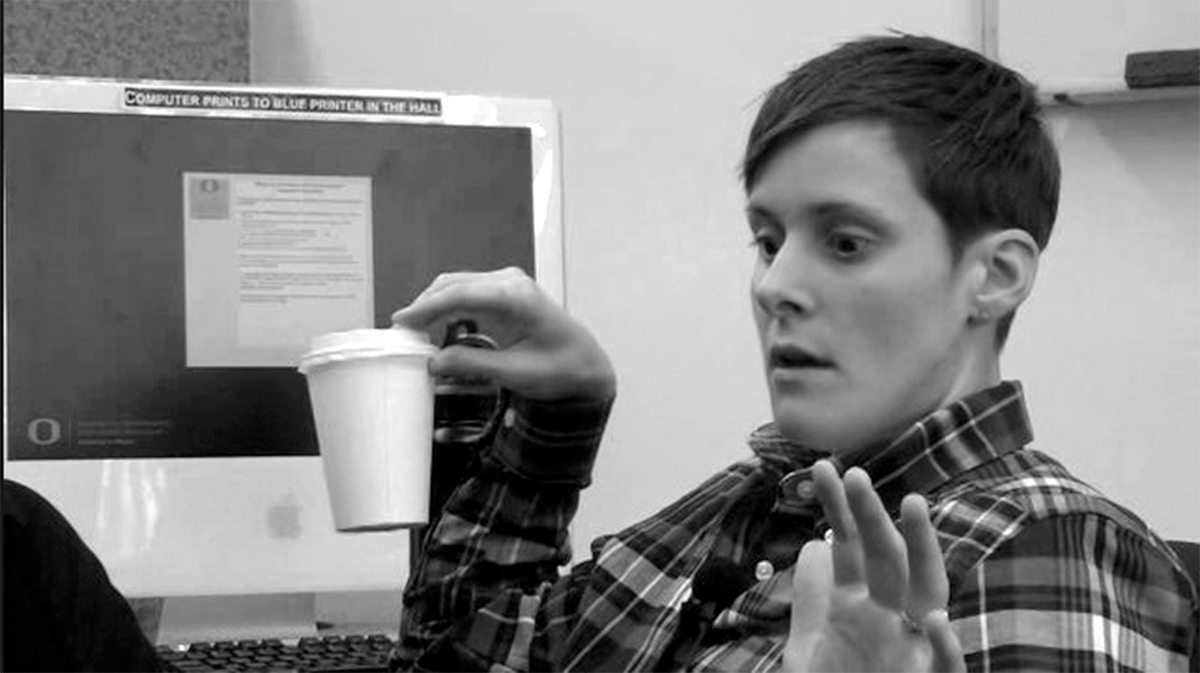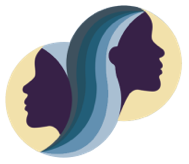
by Erica Ciszek, PhD candidate , UO School of Journalism and Communication
In winter 2013, I spent five days in Atlanta at the National Gay and Lesbian Task Force’s 25th annual Creating Change conference, the largest LGBT activist and advocacy conference in the United States. I was in attendance with more than 3,000 LGBT activists and advocates. Over the course of five days, I had the opportunity to attend more than 250 workshops and caucus sessions, four keynote plenary sessions, meetings, receptions, and social events. I was surrounded by community organizers, outreach volunteers, lobbyists, and activists who have been working on behalf of LGBT rights for more than thirty years—people who have devoted their entire personal and professional lives to doing this work and building and sustaining momentum for the movement.
Since 1988, the conference has been a space for activists to gather for skill building, community building, and to build political power from the ground up. The executive director of the task force, Rea Carey, noted, “We are living in a watershed moment for LGBT equality in America” because of “25 years of mobilizing, strategizing…celebrating our right to love and be ourselves” (Creating Change Program, 2013). In the opening statements to the conference and in the first few pages of the program, the movement’s dedication to legislative action is apparent. The issues on the agenda that year included the Employment Non-Discrimination Act, the repeal of the Defense of Marriage Act, the Uniting American Families Act, the Student Non-Discrimination Act, immigration reform, protections for reproductive rights, economic security, and combating HIV/AIDS.
Other concerns addressed by advocates and activists included issues facing LGBT youth. Recently, bullying has come to the forefront of public attention as a result of the suicides of a number of teens and young adults believed to have been victims of anti-gay bullying. In an opening letter to the 2010 Creating Change conference, Carey wrote:
Let us not forget the tragic losses we have faced this year—and in past years—in the suicides caused by violent harassment faced by our community’s young people. Our nation is facing a serious epidemic that must be faced by our schools and administrators. Our elected officials must act promptly on federal legislation aimed to protect LGBT students from harassment. (p. 7)
Through strategic outreach campaigns, advocacy organizations have been increasingly responding to the needs of LGBT youth. The issues of bullying and suicide continue to be at the forefront of activists’ agendas on local, regional, and national levels.
During a conference panel on safe schools and LGBT youth, Allison Gill, the Government Affairs Director for The Trevor Project—the leading national nonprofit organization providing crisis intervention and suicide prevention services to lesbian, gay, bisexual, transgender, and questioning youth—articulated the need for more research and data on issues pertaining to LGBT youth. My dissertation is a direct response to that call.
As a communication practitioner, I have worked with theories and models and statistical data to provide strategic insights to clients. I had come to believe that having a strategic plan for researching/implementing/evaluating communication is necessary for effective communication. However, over the past four years, I have sat with piles of qualitative data and now have interviewed twenty-four teens and six adults. Meaning-making around identity cannot be reduced to statistical models in which every participant is a data point and those who do not fit the norm are seen as “outliers.” Herein lies the struggle: how do I empower LGBT people and stay true to my queer feminist ideals that every participant’s position is unique and important, but also stay true to my roots as a communicator who understands the need for strategy, planning, and order as well as the realities of working for an organization with resource limitations and intersecting interests?
Similarly, organizational members experience the same issues with balancing their roles as strategic communicators and members of the LGBT movement. In the face of youth suicide, the organization was born out of an eight-minute YouTube video by Dan Savage and Terry Miller, delivering a message of hope to LGBT young people. Hope has allowed the message to reach mass audiences who adopt and adapt the message in different ways. Hope made possible the widespread accessibility and buy-in from a variety of stakeholders, many from the very institutions that the project was critiquing.
The It Gets Better Project faces an identity crisis of its own: can it stay true to its roots as a lifeline for young people while simultaneously partnering with mainstream organizations? Can it challenge cultural inequalities and bring about social change while advocating for acceptance into social and economic institutions that benefit some but not others? The project seems as if it may have outgrown itself, needing human and financial resources that require a strategic shift. The project struggles with its own fate, never originally aiming to be a nonprofit organization, simply a message of hope. In order to sustain its efforts, the organization needs the support of funders who rely on metrics. But the beauty and curse of hope is its ambiguity: everyone can relate to hope, but no one can agree on a way to define and measure it.
Flashback to 2013, the Creating Change conference in Atlanta. I am sitting in the crowd, among hundreds of LGBT activists, wondering what could be done to address the bullying and suicide epidemics plaguing our young people. What I have learned since that time is that instead of assuming we know the issues facing young people today, we should be talking to young people in the places they frequent, both on and offline, about their lives and experiences. They share many concerns with those of the more established LGBT movement, but they bring forth new and relevant issues that resonate with their day-to-day lives. LGBT young people are much more than a single demographic, and campaigns, to be effective, must embrace the multiplicity of their identities.
I am grateful to the funders of CSWS for supporting my research with a graduate student research grant.
— Erica Ciszek is a doctoral candidate at UO’s School of Journalism and Communication. A New England native, she worked in Boston as a strategic analyst for Mullen Advertising and Public Relations. She also has worked in market research and has contributed to LGBT newspapers and magazines in New England.

